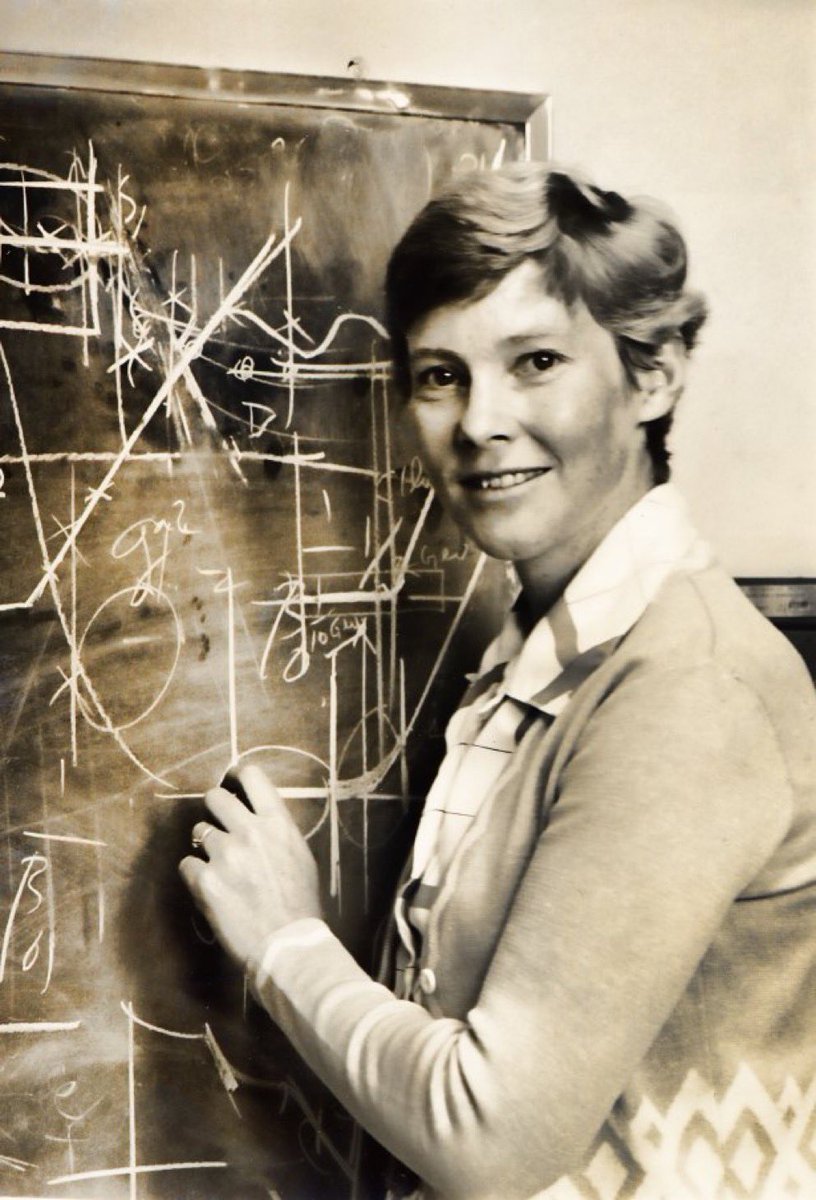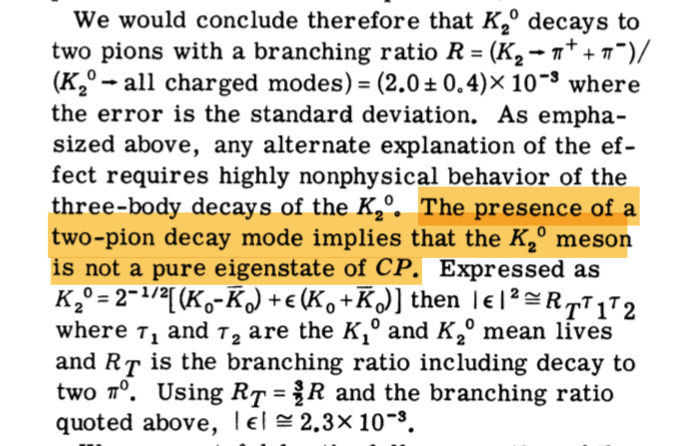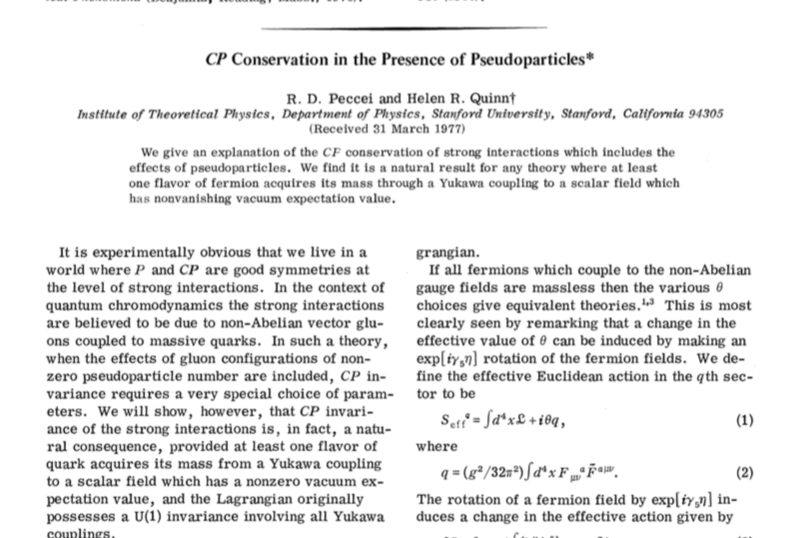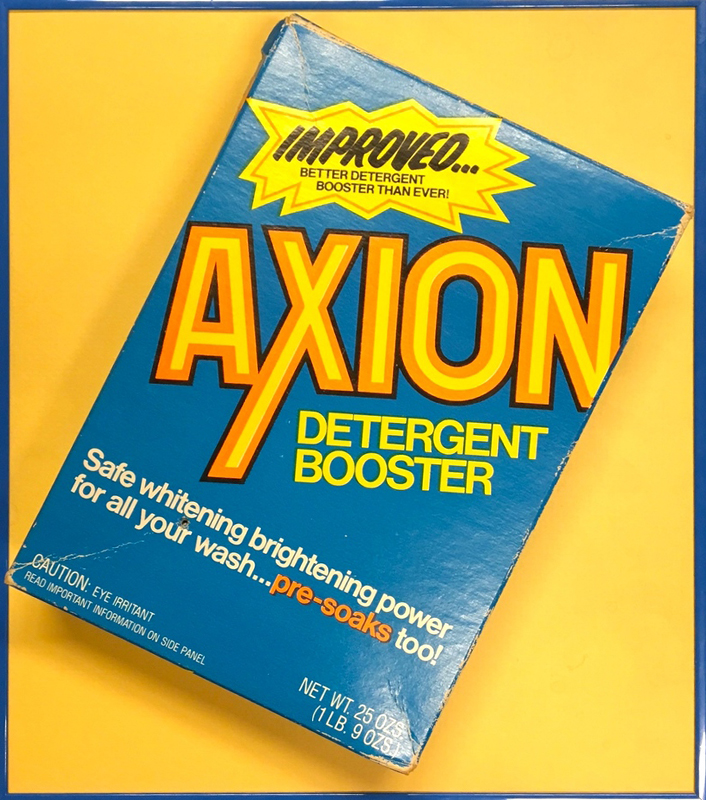Physicist Helen Quinn was born #OTD in 1943. She is best known for Peccei-Quinn theory, a proposed explanation of the Strong CP problem of quantum chromodynamics. It implies a very light particle –the axion– which may be a component of dark matter.
Image: H. Quinn/ @QuantaMagazine
Image: H. Quinn/ @QuantaMagazine
I’m teaching this morning, but maybe I can talk more about axions later today. In the meantime, let me direct you to @IBJIYONGI& #39;s piece for @newscientist. https://www.newscientist.com/article/mg24232302-100-axions-may-or-may-not-exist-but-were-not-just-making-things-up/">https://www.newscientist.com/article/m...
So what is the "strong CP problem,” why does it need a solution, and what did Quinn and Peccei propose? In particle physics (and in physics in general) we are always looking for symmetries of nature.
A symmetry is a way you can transform a system (like rotating an object or shifting its position) or your description of a system (swapping out the particles in your model for different combinations of those particles) that leaves the physics unchanged.
Some transformations are “continuous.” That means I can do them a little or a lot or not at all. For instance, a sphere looks the same if I rotate it. I could turn it by a large angle or a small one. Letting the angle go to zero is the same as not rotating it at all.
And some transformations are “discrete.” You either do them or you don’t. For example, you can swap left and right like the reflection in a mirror. “A little bit of reflection” isn’t an option. Unlike rotations, there& #39;s no continuous parameter describing the amount of reflection.
There are three discrete transformations of interest in particle physics. They change the dynamical objects or the parameters appearing in our description of the physics. If the new description is still consistent with what we see in Nature, the transformation is a symmetry.
The first transformation is charge conjugation (C) which swaps every particle with its antiparticle. The second is parity (P) which flips one or more spatial directions like a reflection in a mirror. The third is time reversal (T) which reverses the direction of time.
The Weak Interaction — one of the three interactions appearing at low energies in the Standard Model of particle physics — is not invariant under C or P transformations. Only left-handed particles and right-handed antiparticles seem to participate in the Weak Interaction.
For a while, physicists thought CP — charge conjugation along with a parity transformation — would be a symmetry of the Weak Interaction. But that is violated as well.
https://journals.aps.org/prl/abstract/10.1103/PhysRevLett.13.138">https://journals.aps.org/prl/abstr...
https://journals.aps.org/prl/abstract/10.1103/PhysRevLett.13.138">https://journals.aps.org/prl/abstr...
Anyway, quantum chromodynamics (QCD) is the theory of quarks and gluons that describes the Strong Interaction. Based on the rules for how we construct theories of particle physics, there& #39;s good reason to expect CP transformations wouldn& #39;t be symmetries of the Strong Interaction.
Except, when we do experiments looking for evidence of CP violating processes in QCD, we don’t find anything. This leads to what we call the “Strong CP” problem. There’s a number θ that appears in the description of the Strong Interaction that quantifies the CP violation.
This number θ could take any value between 0 and 2π. As far as we can tell, there’s no reason for it to take a particular value. Experimental bounds put it *very* close to zero, which is surprising. There’s more real estate not close to zero than there is very close to zero.
Another name for this sort of problem is “fine tuning.” Unless a number in your theory has a good reason to be exceptionally small, you don’t expect it to be exceptionally small.
(Some physicists question how much stock we put in "fine tuning” and “naturalness” as criteria for whether or not some aspect of a theory is problematic or requires explanation. That’s another thread.)
Quinn and Peccei proposed a mechanism that explains the lack of CP violation in QCD. The parameter θ isn’t static, they reasoned. Rather, it’s a field itself. The dynamics of this field within QCD naturally cause it to settle down to a value of zero.
https://journals.aps.org/prl/abstract/10.1103/PhysRevLett.38.1440">https://journals.aps.org/prl/abstr...
https://journals.aps.org/prl/abstract/10.1103/PhysRevLett.38.1440">https://journals.aps.org/prl/abstr...
In quantum field theory particles arise as excitations of fields. Wilczek and Weinberg both worked out the details of the new particle produced by the Peccei-Quinn mechanism. Wilczek named it “axion” after a brand of detergent, because it cleaned up some outstanding problems.
(I am leaving out a lot of technical details here!)
Anyway, the original version of the axion studied by Weinberg and Wilczek was experimentally ruled out. But it’s a lovely idea, and there are many variants that are still of phenomenological interest.
In particular, some models with axions claim to naturally produce light particles that are very unlikely to interact with most Standard Model particles. That makes them suitable candidates for Dark Matter.
I already linked to a piece on axions by @IBJIYONGI. Here& #39;s one in @QuantaMagazine by @FrankWilczek! https://www.quantamagazine.org/how-axions-may-explain-times-arrow-20160107/">https://www.quantamagazine.org/how-axion...
Besides her work in fundamental physics, Dr. Quinn has also been involved in physics education. She is one of the founders of the Contemporary Physics Education Project.
https://www.cpepphysics.org"> https://www.cpepphysics.org
https://www.cpepphysics.org"> https://www.cpepphysics.org

 Read on Twitter
Read on Twitter





